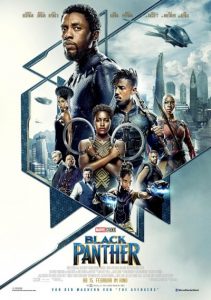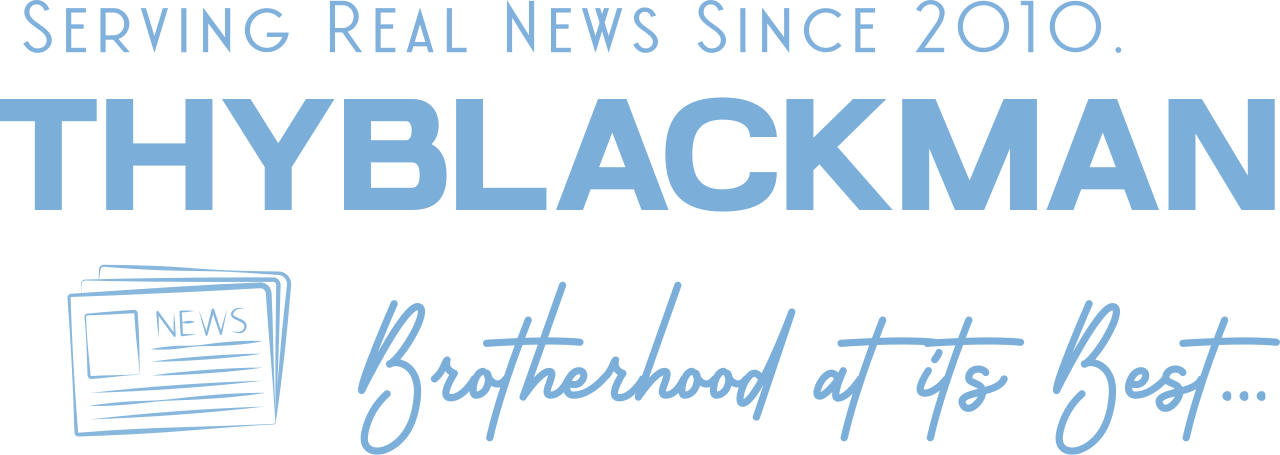(ThyBlackMan.com) The Black Panther was a visually stunning film that paid homage to the shared values, traditions and customs of African people. This powerful screenplay was set in the fictitious Kingdom of Wakanda, a completely self-sufficient, politically independent, highly-technological, and scientifically-advanced African nation. This is a concept never before seen in cinema or other Western art forms. Most, if not all other Hollywood movies about the continent were merely attempts to romanticize slavery and European domination; fuel economic exploitation; perpetuate scientific racism and medical apartheid; or normalize oppression by combining drama and pictures with historical inaccuracies and outright lies.
But not the Black Panther, this movie seemed to ignite the imagination of the African mind. African children envisioned themselves positioned on the world stage postured in technological, economic and political power. This due to how skillfully the Black Panther portrayed traditional African life absent Arab, European or Asian influences. It illustrated the importance of ancestral veneration and highlighted traditional spirituality with respect. And it demonstrated a balance and complementarity between men and women with brilliance. In sum, Black Panther quenched the thirst of the African who craved its generous welcome into the world of cinematic superheroes while simultaneously delivering an open rebuke to all prior Hollywood movies that ever casted African people in a negative light. Or so it seemed.
Clearly, the Black Panther had some positive messages, but it was also laden with pernicious ideas. These manifested in the film through the propaganda of tribalism over nationalism; isolationism over Pan-Africanism; selfishness over self-preservation; and, strife over reconciliation. The fact that Black Panther failed to foster unity, spiritual healing or cultural restoration among African people was the desired result of the film, not a mere consequence. In a prophetic statement made by filmmaker, Shirikiana Aina, in her thought-provoking documentary, Through the Door of No Return, “The system that separated us continues to work night and day to keep that separation as vast as the ocean itself.” Nearly four decades after making that film, this system has unveiled another Trojan horse to destroy Africa’s slumbering people, but this time the benefaction has taken on the form of a black panther.
Armed with this awareness it is important to examine the real intent behind the making of this film. Doing so, may reveal a subterfuge led by the deceitful in order to further the divide between an already politically confused and socially fragmented group of people. Also take into account that this year marks the 400th anniversary of the American African holocaust. This means African people have 400 valid reasons to approach any offerings from their oppressors with cautious wisdom for absolute survival.
At this point, it is necessary to address another important matter. There are some who may think that movies are purely for entertainment and therefore the Black Panther is also purely for entertainment and contains no politically perverse messages or agendas. But this is entirely untrue; movies are often used as powerful mediums to produce lasting political and social change. Movies can influence people to accept previously unacceptable behaviors, and to even shape or reshape reality. As one film maker divulged, “Give people films, they will forget after a few weeks, but give people ideas, they will assimilate them into their consciousness.”
Prayerfully, whatever discourse this article generates will be done with objectivity and respectfulness.
In analyzing this film, it became obvious that the Black Panther contained some problematic themes. To address them not only requires posing the right questions, but exploring the political and financial motives that lie behind their answers. The following six questions give rise to the three counter-beneficial themes discussed by this writing:
-
Why was Killmonger’s mother not featured in the film?
-
Why was it necessary to make Killmonger killer of his own girlfriend?
-
What role would Killmonger’s girlfriend have played in Wakanda?
-
What was the purpose of pairing Killmonger’s violent tendencies with the respectable ambition of a Pan-African Nationalist?
-
How is it that a royal King of Wakanda became friends with a mere government agent?
-
Why would a Wakandan Princess be left alone in the presence of white men?
Counter-beneficial theme is a term used herein to suggest ideas that have been implanted subversively into the movie. The first deals with the omission of American African women from the movie. The second addresses the mischaracterization of American African Men who possess Alpha-male type personalities and espouse Pan-African values. And the third, addresses the movie’s subtle maintenance of white superiority and privilege over African people.
Counter-Beneficial Theme Number One: American African Women Are Irrelevant.
At first, counter-beneficial theme number one was a challenge to explain. One of the Black Panther film’s greatest achievements is its celebration of African womanhood. Wakandan women held many roles in society. They were warriors, scientist, political councilmembers, mothers, elders, royalty, and loyal citizens. Each of them displayed characteristics that were nothing short of pure wisdom, strength and beauty. So it may come as a surprise to know that for some women and American African women in particular, watching the Black Panther was painful to do because of the underlying messages it contained about their value and worth as a group of African people.
It’s undeniable that Black American women relished in the experience of seeing the powerful, bold, nobility of Wakandan woman on the big screen just the same as other African women did. Yet, some also reported feeling sad, orphaned, side-stepped, or even physically sick after watching the movie. This occurred in real life during a question and answer session that took place in Washington, DC last month after a profound discussion about the Black Panther movie. One woman reported feeling physically sick after viewing the film and another mentioned feeling a sense of homelessness. Both women were Black American or American Africans.
The question that should be asked is-why? Was it because these women did not see themselves physically reflected in those strikingly beautiful Wakandan women? No, that was not it. They readily identified with the faces, hair styles, and body types that were reflected back at them in the film. So what were these strange, emotional sensations rooted in? The panelists provided some good insights about what possibly could have happened to them while watching the film. Psychiatrist, Dr. Patricia Newton proffered a uniquely plausible explanation from her perspective as an African healer and behavioral specialist. Dr. Newton opined that these reactions could be very well be due to overstimulation of the nervous system- a result of all the intense visual messages, sounds and drama received by their minds and bodies while watching the film. Other panelist offered equally plausible explanations too. But could there possibly be other explanations for what they were feeling? Were other Black women feeling the same way?
The Black Panther movie provided just two possible ways for the expression of womanhood from the American African perspective. And in both instances, the Black Panther failed to give voice to the wisdom, strength and beautiful experiences of Black American women. As a result, could the Black Panther’s filmmakers be sending a subliminal message to this group of women? Was the world being told that American African women have no place in Wakanda-and have no value anywhere else in the real African world? Possibly so and therefore these issues need to be explored. The messages, intentional or not, should be examined more deeply and a good place to start would be with the two characters whose roles likely represent the American African woman, that of Eric Killmonger’s mother and his girlfriend, both of whom went unnamed in the movie.
The first way the movie failed American African women was by its omission of Killmonger’s mother. The woman who gave birth to N’Jabaka, (Killmonger’s birth name) was arguably, the most important person in the film. She served as the catalyst for all the drama that unfolds in her absence. Without her, N’Jobu would not have fallen in love and produced their son, infamously called Killmonger, the film’s leading villain. King T’Challa would never have been tested for the true leadership spirit he possessed. And the Kingdom of Wakanda would not have had a revolution that divided the nation into two factions or restoration under King T’Challa. This woman, Killmonger’s unnamed mother, was very important indeed.
Who then was she and why was she omitted from the film? Was it strategic to make her a non-issue? There was not a single picture of her in the whole film. She was literally and figuratively non-existent. No one inquired about her life or what happened to her the entire length of the film. Ironically, not even Killmonger mentions the woman who gave birth to him; who probably raised him and saw to it that he had food, water, clothing and shelter; that made sure that he recouped from the trauma of finding his dead father alone in their Oakland apartment; and, who probably helped him make it through MIT. Someone did, after all he was just a child unable to care for himself when his father, N’Jobu died.
Divine imagination and circumstances lend credence to the ideas that whoever she was, she personified as a powerful, soulful, politically conscious, Black woman with a gentle, yet persuasive spirit and a warrior-like determination. Who else could be responsible for persuading a man of privilege, from the royal Wakandan bloodline like N’Jobu, to not only love her and produce a child in her womb, but to change his way of thinking of himself in relationship to other African people?
She must have been something like the Queen Mothers from the civil rights era, like the Honorable Betty Shabazz or Corretta Scott King, women with the gift of divine influence. Or, maybe she more like the Queen Mothers of the Jim Crow era, like the Illustrious Ida B. Wells or Fannie Lou Hammer, women who knew the importance of being armed for defense under a brutal, oppressive white regime backed up by the force of an unjust system of law. It could go deeper; she might have even channeled the courage and divine ingenuity of a Queen Mother like Harriet Tubman or Anna Murray Douglas. Only one thing is certain, she was the kind of woman who would demand that her man do something to rid the ghettos of Oakland of the oppression, drugs and poverty she witnessed if he were able to do so. Otherwise she would not be inclined to love him. Yes, a woman like her would require more of her man.
The second way American African women were failed by the Black Panther movie was through the woman portrayed as Killmonger’s girlfriend. It’s easy to forget about her considering the small amount of time she stayed in the film. She was the young, black American woman with curly hair who contaminated the beverage that poisoned the museum curator. She risked it all for Killmonger. She could have been imprisoned if caught by the authorities for helping him and Ulysses Klaue, the arms dealer who helped orchestrate the museum heist to obtain the vibranium. The only thing that resonated about her was that she apologized to Killmonger for being caught in the crosshairs of his and Klaue’s gun. This was right before he shot her down in cold blood without even a kiss on the forehead goodbye.
So for women, who felt sad, orphaned, side-stepped or physically ill after watching the movie, do not feel alone. These reactions may stem from many things related to the movie, including a subconscious awareness that Black American women were indeed slighted in the making of this film. For some reason, the filmmakers made a low estimation about the worth of black women and came to the conclusion that doing so would be inconsequential to them as filmmakers or their profits. Perhaps they were right? If this is the case, they sent a powerful counter-beneficial message to and about Black American women. That message suggests that American African females do not have a role in Africa’s promising future.
The solution to this dilemma may rest in seeking out and supporting independent African and American African filmmakers, who produce, finance and create life-affirming movies and documentaries that pay homage to the entire truth of the African experience. Films like, Birth of a Nation, co-written, co-produced and directed by Nate Parker and co-writer, Jean McGianni Celestin; Footprints of PanAfricanism produced by Shirikiana Aina; Daughters of the Dust, directed and produced by Julie Dash; Sankofa directed by Haile Gerima; and, Dark Girls co-directed by Bill Duke and D. Channsin Berry. These movies have proven the test of time and do a remarkable job of relaying the struggles, victories and vast experiences of both African men and women.
Counter-Beneficial Theme No 2: Black American Men Are Always Dangerous to and for African People
Some black women may have felt underrepresented in the Black Panther. Perhaps they can take consolation in the possibility that lack of representation is preferable to misrepresentation. Black men must have been disheartened that even in a movie purported to celebrate black excellence; they can still expect to be tragically mischaracterized. The Black Panther set an unfortunate precedent for the alienation of American African manhood. The filmmakers seemed to have accomplished this end by attempting to have American African men vicariously perceived through a villain named Eric Killmonger.
Killmonger was the only Black American man portrayed in the Black Panther movie. He just so happened to be the person selected by the filmmakers to single-handedly dethrone King T’Challa and lead the entire nation into a revolutionary war. He even attempted to destroy all of the heart-shaped herb responsible for blessing each King with supernatural powers manifested in them in their dual role as Black Panther. This act alone suggests that Black American men are immature and possess short-sightedness. Had Killmonger been fortunate enough to produce an heir, he should have known that his child too would need access to the heart-shaped herb in order to rule as both King and Black Panther. Of course, this is laughable. Metaphorically speaking, the movie wasn’t meant to prosper American African lives, but to diminish them.
If this movie were a blue-print for guiding future relations between continental Africans and American African men, the oppression Killmonger so passionately spoke of taking place in America and other parts of the world would soon be the norm for the treatment of American African men on the continent of Africa. Did you take notice of how Killmonger, who revealed himself as N’Jabaka, son of N’Jobu, was escorted before King T’Challa and the royal court in handcuffs? He had not committed any crime as far as Wakandans were concerned. In fact, he came bearing the body of Ulysses Klaue, the man who stole vibranium and claimed several Wakandan lives in the process. Yet, N’Jabaka found himself handcuffed; treated like an average criminal in the land of his ancestors. Contrast N’Jabaka’s confinement with the freedoms and privileges afforded to Agent Everett K. Ross. Agent Ross roamed about the secret Wakandan facilities unencumbered by guards or handcuffs. He was even left alone with a royal princess.
One could argue that N’Jabaka later proved to be a real threat to the Kingdom of Wakanda after winning the throne. And this too, is a construct of the filmmaker’s doing. The most unnecessarily violent scenes in the whole movie were perpetuated against the Wakandan women at the hands of King N’Jabaka. Specifically, there were three incidents that resonated as severely harmful and deeply disturbing to audiences. The first was when N’Jabaka picked up the Queen Mother by her neck and nearly choked her to death. This behavior probably had the most impact on Africans because of the respect and reverence that is always owed to the elders-especially to Queen Mothers. That act alone destroyed any credibility he had with true Pan Africans male or female.
The second was the slaying of a member of the Royal Wakandan female guard. When King N’Jabaka slit her throat with his sword, he lost everything with African women. The royal Wakandan guards personified everything black womanhood stands for- love for her people, sacrifice, and beauty, a willingness to die for what is right, strength, spirituality, goodness and loyalty to the race. Killing her, he damned himself to hell in the minds of most revolutionary-minded black people. The third act was the one that triggered a really deep pain in African people-especially mothers. It was the absolutely deplorable idea that any African man could think of hurting-much less killing-a precious girl child, and a princess at that.
These acts of violence King N’Jabaka committed against women were unforgivable which is exactly why they were embedded by the filmmakers into the script. Remember, this beautiful gift of film from Disney is also a Trojan horse! It contains subtle messages, like psychological weapons meant to do harm. But it will also provide the kind of stimuli that will disarm Black people with so much euphoria, glory and pride that they will be willing to ignore, avoid and overlook any painful disinformation contained in the film. But please exercise courage and discernment. Deal with the pain as well. That way, the Black Panther will become a tool for dissecting, teaching and illustrating the art and power of psychological warfare.
Counter-Beneficial Theme No 3: White Privilege dictates that white people will never be restrained, confined, disciplined, or destroyed by Wakandans (Africans).
This segues to counter-beneficial theme number three. There is something deeply unsettling about a royal African Princess being left alone by her Wakandan King and brother to nurse a white man back to health. Agent Ross was a stranger and a foreigner to Princess Shuri, yet his privilege as a white agent dictated that he was worthy of being cared for by a royal Wakandan princess. Could you imagine a scenario where a young, white Disney princess is left alone by her older brother, let’s say-the King of England to heal a dying black man? This is laughable. No matter how smart she may be no filmmaker would ever risk upsetting America’s delicate racial cast system in order to make a young, white royal princess be left all alone with a wounded black man for the purpose of nursing him back to health-never.
On a similar note, Agent Ross demonstrated his white privilege by treading the boundaries of diplomacy in his communications with King T’Challa. The King is the highest authority in Wakanda. He is the equivalent politically to the U.S President or British Prime Minister. Yet, throughout the movie, King T’Challa and Agent Ross were portrayed as equals. This issue was broached when a royal guard expressed disapproval for Agent Ross touching King T’Challa’s shoulder in violation of diplomatic custom and norm. Although many people chuckled in approval at the small acknowledgement that Agent Ross was out of line and should have been disciplined for the disrespect, most people missed the point. Agent Ross did consider himself the equivalent to the King. Apparently, the Black Panther filmmakers did too. Yet, Africans were appeased by a mere expression of disapproval; no actual discipline was ever required.
In any case, it is highly unlikely that Agent Ross or his black equivalent would have been shown taking such liberty with a US president or European leader. In real life, African world leaders are being tested in unprecedented ways by white supremacy as the asymmetrical power dynamic between ‘first’ and ‘third’ world nations deepens. Recently, the President of the United States allegedly called Africa and other ‘third world’ countries “shit-hole nations” in reference to immigration. It must be difficult for the rulers of these nations to grapple with such disparaging remarks by the leader of arguably the most powerful nation in the world. Understandably, this issue will be observed diplomatically by these leaders. The Black Panther, however, could have taken a lot more liberty to address the disrespect shown to him. After all, he is not only a King worthy of upmost respect; he is a superhero with supernatural ability.
Another point to note on the unspoken rules of white supremacy related to the interracial fight scenes. Not once in the film, were the Wakandans portrayed killing any white person. In fact, there was only one fight scene in the movie that involved a physical altercation between Wakandans and whites. The fight occurred when the Wakandans had their cover blown in Korea. There were lots of athletic bravado, some punching, throwing, and kicking but no blood was drawn from white people. In other words, King T’Challa, Nakia, the spy, and Okoye, the royal guard, each fought bravely in the club. They used objects to inflict and deflect blows on the white men they encountered during the conflict, but at no point could they be observed inflicting serious injury or death on a white person.
This was illuminated in the scene where the Black Panther had finally captured Klaue. But not even he could satisfy his quench for justice by executing the man he came to kill in the first place. Arguably, it was his inability to kill Klaue in Korea that served as the impetus for the revolution that took place later in Wakanda. The filmmakers did such a great job of deescalating the violence in the Korean club scene that their intentions almost seemed admirable-after all, this was Disney. Over the top violence could traumatize the children who would surely be watching.
Still, the fact that no white person was truly threatened by the actions of a Wakandan must have been reassuring for white people psychologically. It must have been reaffirming to know that no matter where they are in the world, or what crimes they commit, they never really have to worry about dying at the hands of the Wakandans (Africans); not even when they are brandishing guns or behaving with aggression. This is not to say that a few white people in the movie did not die; but they did so only at the hands of another white man, namely Klaue. Of course there was one exception. Klaue was killed by Killmonger, but who wasn’t subject to death at the hand of the irrational, murderous Killmonger?
The Wakandans, on the other hand, were not exempt from death or terrible displays of violence. In fact, the most violent, flesh-cutting scenes in the movie were reserved for them. Sadly, for American African men most of that violence was inflicted by Killmonger. A few of the scenes were between Wakandans however. Case in point, recall the first ceremonial challenge for the throne when King M’Baku head-butted T’Challa. The sound and appearance of that act of violence was so realistic and hard to watch that some of the audience reacted by recoiling in pain for T’Challa. Of course the most violent scenes in the movie, as previously discussed under counter-beneficial theme number two, were reserved for Killmonger. This firm unwillingness of the Black Panther’s filmmakers to show a Wakandan killing a white man makes perfect sense to those who understand the principles of white supremacy.
The filmmakers were intentional and approached matters of race with the precision of a heart surgeon. Perhaps this is why helping other African nations get rid of oppression was not optional for King T’Challa or his father, King T’Chaka. It was easier to make cowards out of kings, than to upset the power structure. Their preference for isolation over intervention showed up vividly in the words of King T’Chaka, who declared to his son from the ancestral realm that he chose to protect his people (Wakandans) and omit the truth of the child (who represented all American Africans). Similarly, note that the only reason the Nigerian girls were saved from captivity was because King T’Challa wanted his love interest, Nakia, at his coronation. This is selfish, not self-preservation. Self-preservation would have been to rescue the women because a threat to justice anywhere is a threat to justice everywhere.
In conclusion, enjoy great cinematic art like the Black Panther. Also seek out and support independent films that relay the unadulterated truth about our culture and history. A good place to start is Footprints of Pan Africanism, by Shirikiana Aina. This compelling documentary provides a phenomenal history of the greatest experiment in Pan-Africanism under the first President and Prime Minister of Ghana, Kwame Nkrumah. It also highlights the resurgence of the Pan-African movement after the Right Excellent Marcus Mosiah Garvey and reveals the aspirations held by some of our strongest freedom fighters including: El Hajj Malik El Shabazz or Malcom X; Sekou Toure of Guinea; Patrice Lumumba of Congo; the Honorary Prince of Ethiopia-Ras Mekonnen; Samora Machel of Mozambique; and the countless other men and women whose names are less familiar, but whose contributions are just as worthy of our respect, homage, recognition and libations. These are some true to life Black Panthers.
Staff Writer; Sheila D. Brown, JD
One can visit this sister online over at; Sheilabrownspeaks.com.
Facebook: http://Facebook.com/sheilabrownspeaks.
Instagram: http://Instagram.com/sheilabrownspeaks.

















Leave a Reply